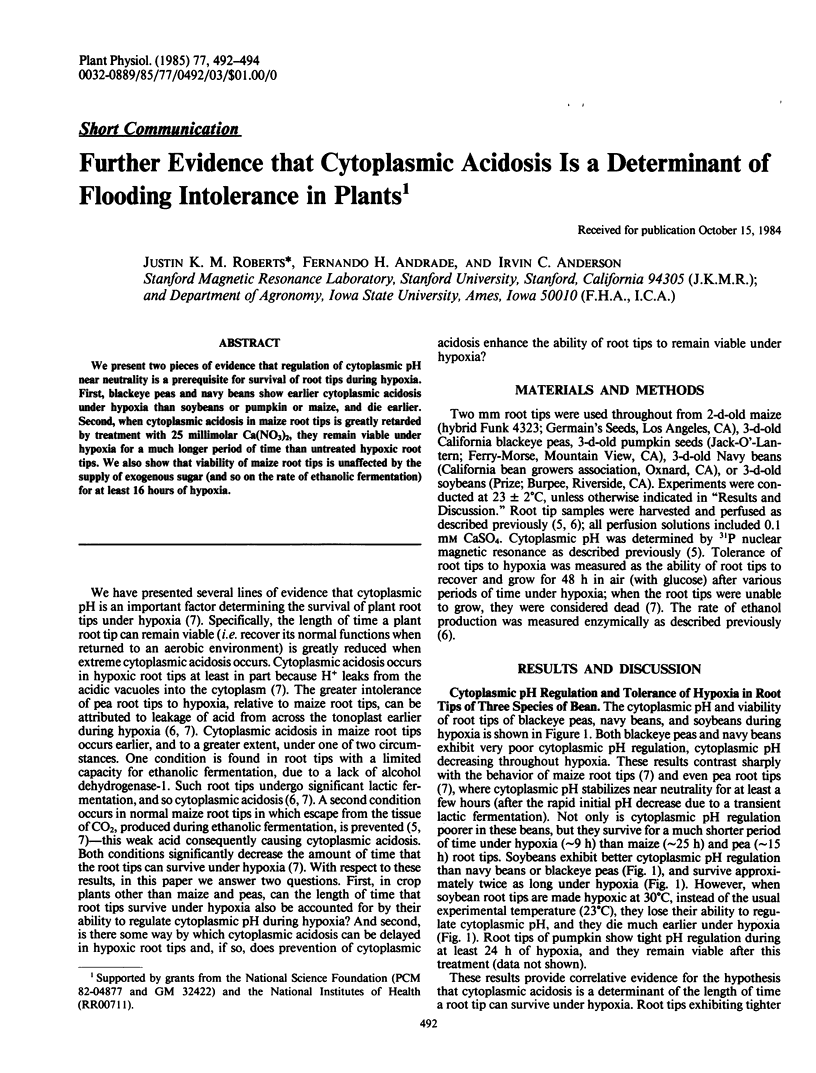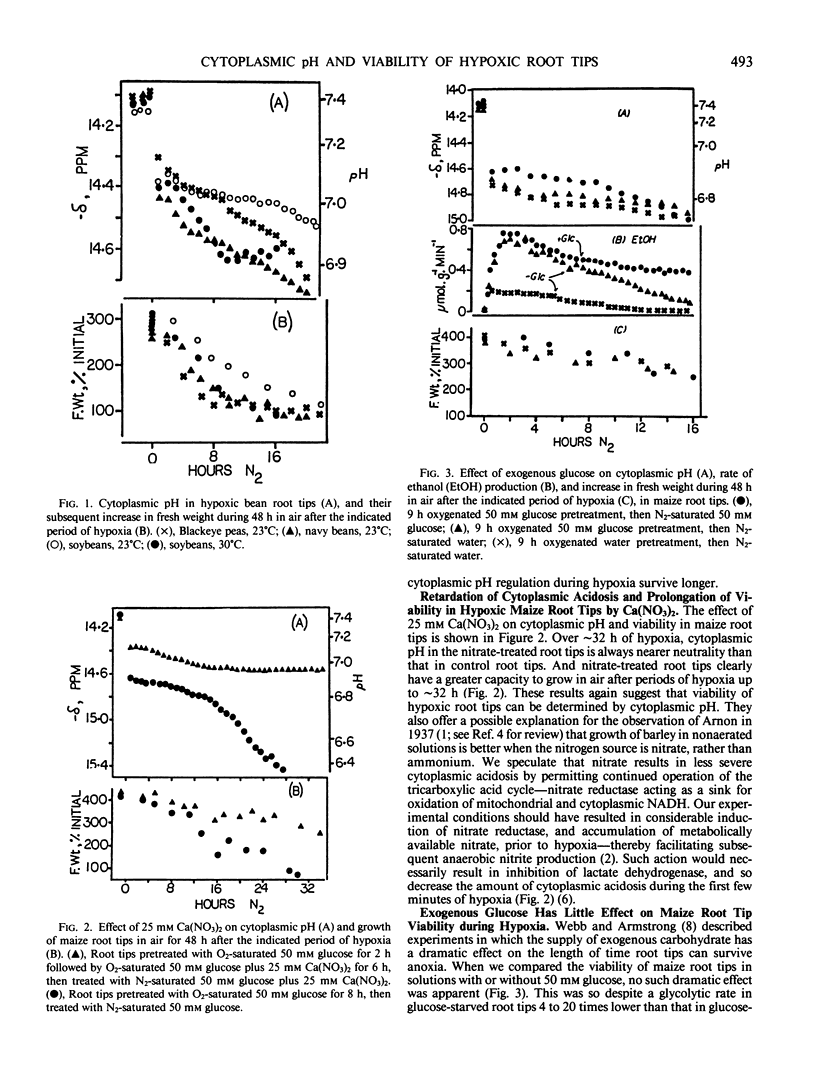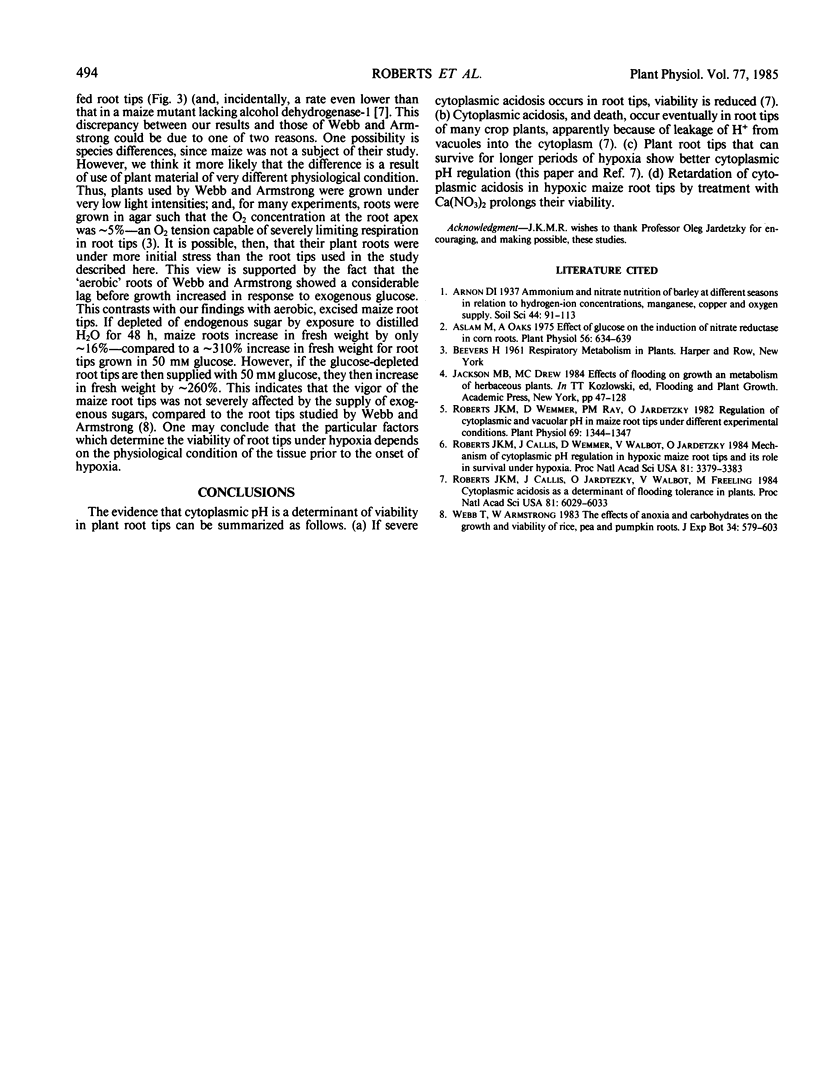Abstract
We present two pieces of evidence that regulation of cytoplasmic pH near neutrality is a prerequisite for survival of root tips during hypoxia. First, blackeye peas and navy beans show earlier cytoplasmic acidosis under hypoxia than soybeans or pumpkin or maize, and die earlier. Second, when cytoplasmic acidosis in maize root tips is greatly retarded by treatment with 25 millimolar Ca(NO3)2, they remain viable under hypoxia for a much longer period of time than untreated hypoxic root tips. We also show that viability of maize root tips is unaffected by the supply of exogenous sugar (and so on the rate of ethanolic fermentation) for at least 16 hours of hypoxia.
Full text
PDF


Selected References
These references are in PubMed. This may not be the complete list of references from this article.
- Aslam M., Oaks A. Effect of glucose on the induction of nitrate reductase in corn roots. Plant Physiol. 1975 Nov;56(5):634–639. doi: 10.1104/pp.56.5.634. [DOI] [PMC free article] [PubMed] [Google Scholar]
- Roberts J. K., Callis J., Jardetzky O., Walbot V., Freeling M. Cytoplasmic acidosis as a determinant of flooding intolerance in plants. Proc Natl Acad Sci U S A. 1984 Oct;81(19):6029–6033. doi: 10.1073/pnas.81.19.6029. [DOI] [PMC free article] [PubMed] [Google Scholar]
- Roberts J. K., Callis J., Wemmer D., Walbot V., Jardetzky O. Mechanisms of cytoplasmic pH regulation in hypoxic maize root tips and its role in survival under hypoxia. Proc Natl Acad Sci U S A. 1984 Jun;81(11):3379–3383. doi: 10.1073/pnas.81.11.3379. [DOI] [PMC free article] [PubMed] [Google Scholar]
- Roberts J. K., Wemmer D., Ray P. M., Jardetzky O. Regulation of Cytoplasmic and Vacuolar pH in Maize Root Tips under Different Experimental Conditions. Plant Physiol. 1982 Jun;69(6):1344–1347. doi: 10.1104/pp.69.6.1344. [DOI] [PMC free article] [PubMed] [Google Scholar]


